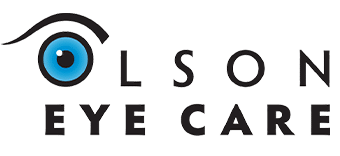Conjunctivitis or “Pink Eye”
Inflammation or infection of the conjunctiva, a thin clear protective membrane that covers the surface of the eye and eyelids. Can be caused by viruses, bacteria, allergens and other irritants such as dust and smoke. Pink eye is very contagious when caused by viruses and bacteria. Common signs and symptoms are red eyes, increased tearing, mucus discharge and blurred vision. In mild cases conjunctivitis will improve within two weeks, but it can also become very serious with sight threatening inflammation.
Cataracts
There are many different types of cataracts. One can be born with cataracts, or they can develop due to trauma, disease, or the typical aging process. Technically everyone will develop cataracts to some degree due to the natural changes of the lens that occur over time; the main variable is how fast they develop. A cataract is a decrease in clarity of the internal lens tissue resulting in decreased clarity of vision, decreased color intensity, and possibly increased glare. If impaired vision due to cataracts is interfering with your daily life cataract surgery may be needed. It is an effective procedure and Dr. Olson works closely with the best surgeons around.
Diabetic Eye Disease
Consists of a group of eye problems that people with diabetes are at risk for developing. Each of these conditions can result in severe vision loss or even blindness. Diabetic eye disease may include:
- Diabetic retinopathy- damage to small blood vessels in the eye
- Cataract – clouding of the lens in the eye
- Glaucoma – increase in fluid pressure inside the eye leading to optic nerve damage and loss of vision.
If diabetic-related damage is seen inside the eye it is likely happening throughout the body. The inside of the eye just happens to be the only location where small blood vessels can be seen in action without surgery. Often there are no symptoms in the early stages of these diseases so it is very important that one does not wait for symptoms to occur. Thorough comprehensive eye exams are a critical part of monitoring and managing people with diabetes. Early detection and proper treatment of these diseases will dramatically reduce the chances of permanent vision loss.
Macular Degeneration
Age-related macular degeneration (AMD) is a relatively common condition and a leading cause of vision loss in people 50 and older. It is a chronic, progressive disease that slowly destroys the millions of light-sensing cells that make up the central part of the retina called the macula. The damaged to these cells results in a loss of central, color, detail vision. The two forms of AMD are “dry” most common and “wet” less common, more vision threatening. There is currently no cure for AMD, but there are ways of trying to slow down, or even stop the degenerative process. Current treatment options are vitamin supplements, laser treatment, and injections. The type of treatment needed depends on the type of AMD. Genetic testing is available to determine ones risk of developing AMD. The latest studies are showing that the genetic testing will also help us to make the best recommendation for vitamin supplements in an attempt to prevent AMD formation and/or progression.
In most cases, reversing the damage caused by AMD is not possible, but protecting your eyes from the sun, eating a balanced diet, taking specific doctor recommended supplements, and quitting smoking can reduce the risk and progression of macular degeneration. For the latest in scientific research guided treatment and best recommendations on AMD contact Olson Eye Care.
Glaucoma
Glaucoma is a potentially blinding group of diseases that result in damage to the optic nerve. The damage is often caused by an increase in pressure inside the eye putting pressure on the nerve fibers that make up the optic nerve. Glaucoma is often referred to as “the silent thief of sight” as it is painless in nature with no signs or symptoms in the early stages of the disease. It is not until the late stages of the disease when damage is severe enough to result in perceivable loss of vision that most people with glaucoma know they have a problem.
Currently there is no cure for glaucoma, but there are medications and surgery available to help slow and even halt further progression of the disease. Early detection and thorough eye exams are key to slowing the progress of glaucoma.


